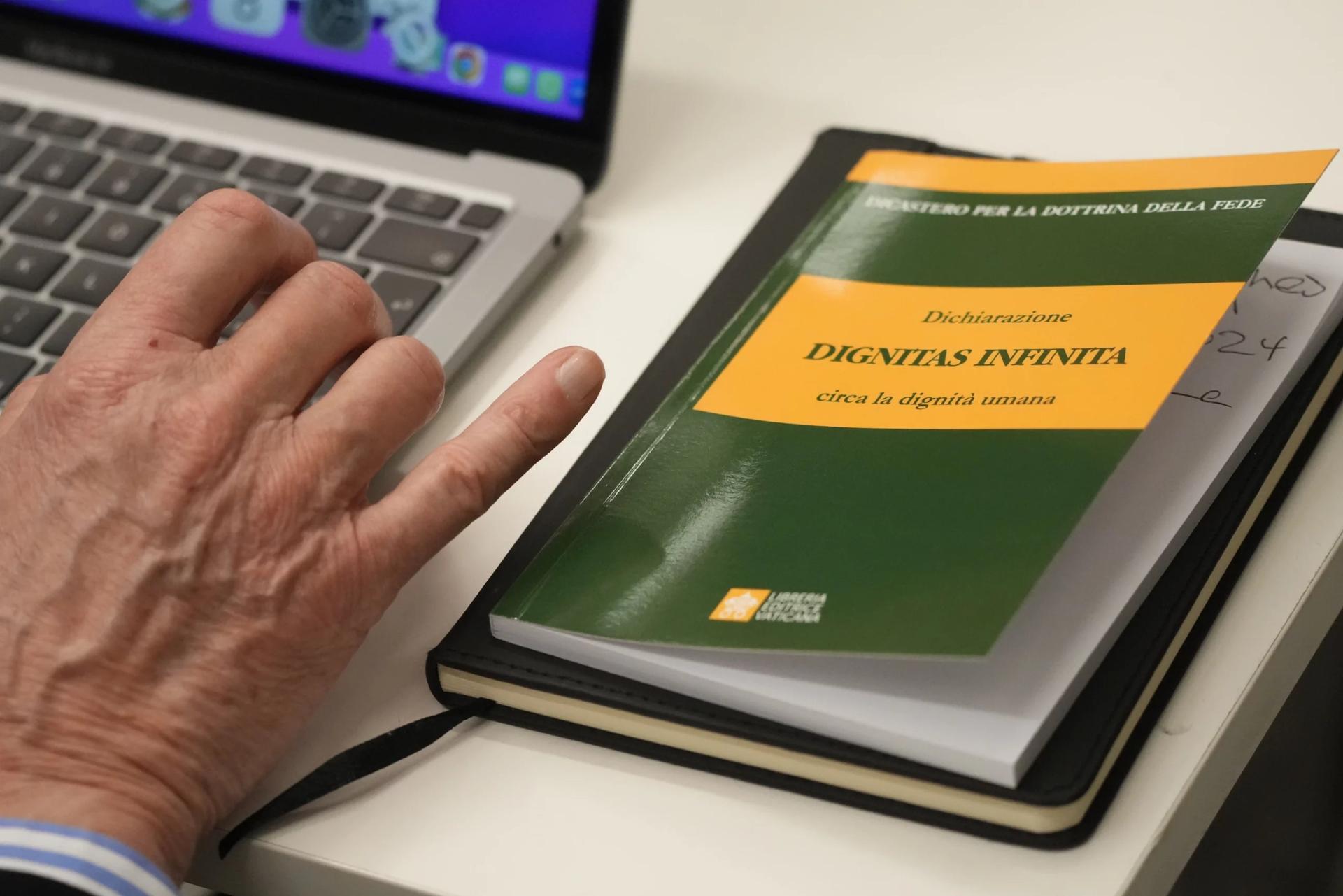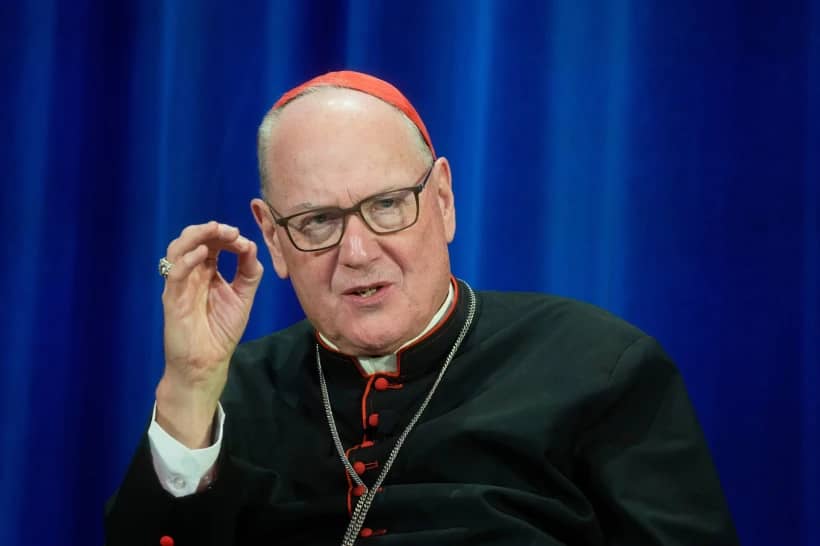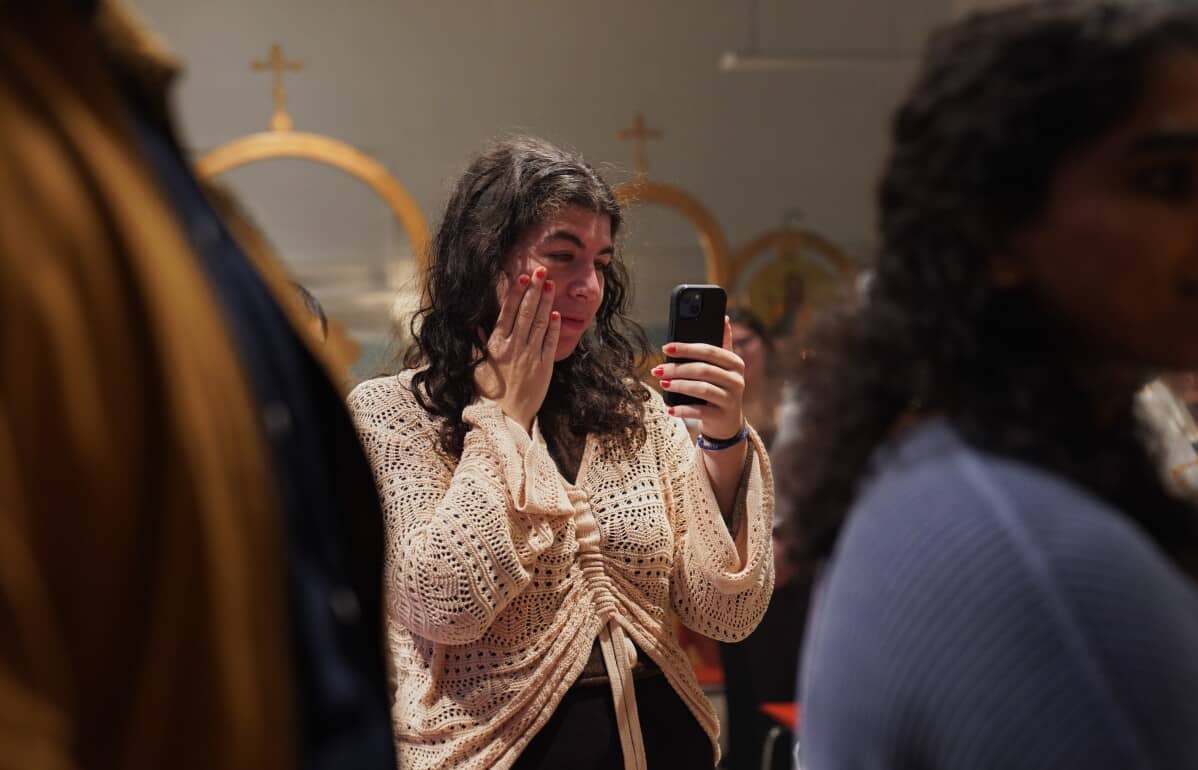NEW YORK – As liberals and conservatives applaud or denounce the Vatican’s new document on human dignity for its stance on particular issues, Catholic moral theologians instead highlight the consistency with which the issues are addressed, and the adherence to Church teaching exhibited.
“The [list of issues] demolishes any kind of attempt to align the Church with liberals or conservatives, or with progressives and traditionalists, because it shows that the Church’s teaching about poverty, and peace, and human trafficking, and migration is completely consistent with its teaching against abortion, against euthanasia, against transgender surgeries, those kinds of things,” David Cloutier, the Ordinary Professor of Moral Theology at the Catholic University of America, told Crux.
The topics addressed in the document – published on April 8 by the Dicastery for the Doctrine of the Faith – as “grave violations of human dignity” are poverty, war, migration, human trafficking, sexual abuse, violence against women, abortion, surrogacy, euthanasia and assisted suicide, the marginalization of people with disabilities, gender theory, sex change, and digital violence.
Perspectives on those topics, however, is only a piece of the document – limited to the fourth and last section before its conclusion. The first three sections – the bulk of the document – are an attempt to clarify the meaning of human dignity, citing frequent confusion that surrounds the use of the term.
Within those three sections the document essentially begins with an umbrella definition of human dignity, that is “every human person possesses an infinite dignity, inalienably grounded in his or her very being, which prevails in and beyond every circumstance, state or situation the person may ever encounter.” From there takes a deep dive into the specifics of dignity, and modern misconceptions around it.
Cloutier said the document is a “powerful statement” of the characteristic social principle of the post Vatican II Church, noting how it doesn’t belong to any one particular papacy. He said he was particularly impressed with how the document wasn’t just a positive statement on dignity, but also pointed out the way in which the language was used and not used correctly.
“In both the broader cultural conversation, and the Catholic conversation, there are these confusions where people are using the word dignity, but they’re not using it in a way that is consonant with the Church’s teaching on dignity,” Cloutier said. “The document takes considerable time pointing out these errors and trying to describe the misunderstandings that give rise to these misunderstandings of dignity.”
Moral theologian Jana Bennett told Crux that her biggest takeaway from the document was the idea that dignity is intrinsic to what it means to be a human being, from which all of its other points stem from.
Bennett described the document as having a theological focus that then gave some attention to some specific issues that arise when human dignity isn’t fully considered. And therefore, she said people shouldn’t have been surprised by the document’s comments on particular issues.
“The document largely did not focus on anything,” said Bennett, the Chair of the Department of Religious Studies at the University of Dayton. “It doesn’t give an in-depth kind of thing, so people who are looking for a more prominent discussion on these questions it’s just not going to be in this document.”
In a statement to Crux, a spokesperson for the United States Conference of Catholic Bishops said that the conference is grateful for the declaration, and that the bishops will study and reflect on it.
“The document emphasizes the long tradition of the Church on the importance of always recognizing, respecting, and protecting the dignity of the human person in all circumstances, and how that needs to be understood, celebrated, and applied to the various situations and challenges we face today,” the spokesperson said.
Of all of the document’s topics, those related to gender and sex have garnered the most commentary and coverage. In particular, Catholic LGBTQ+ advocates have condemned the document, arguing that it fails to recognize the human dignity of transgender and nonbinary people.
In part, the document states that gender theory intends to deny “the greatest possible difference that exists between living beings: sexual difference.” It also states that gender theory is an ideology that “envisages a society without sexual differences, thereby eliminating the anthropological basis of the family.” The Vatican also, however, makes clear that each person, regardless of their sexual orientation, must be respected, and that discrimination and violence against them must be avoided.
Francis DeBernardo, the executive director of the Catholic LGBTQ+ advocacy organization New Ways Ministry, released a statement April 8 on the document arguing that “while [the document] lays out a wonderful rationale for why each human being, regardless of condition in life, must be respected, honored, and loved, it does not apply this principle to gender-diverse people.”
DeBernardo went on to accuse the Vatican of “again supporting and propagating ideas that lead to real physical harm to transgender, nonbinary, and other LGBTQ+ people.”
Asked about the emphasis people have placed on certain issues in the document, Cloutier said it’s important for people to see the whole spectrum of the document. He noted that even in terms of the space devoted to each different issue “there’s a remarkable amount of parallelism,” and so it’s not even possible to claim that the document focuses on certain issues more than others.
Cloutier said he hopes people will realize that, and then ask the deeper question of why people of goodwill, Catholics and non-Catholics alike, cannot see the consistency of Church teaching across all of the issues mentioned in the document.
“I do hope that they see that that’s because people misunderstand what we mean by human dignity and that the document has some very profound things to say about that more abstract question,” Cloutier said.
Follow John Lavenburg on Twitter: @johnlavenburg












